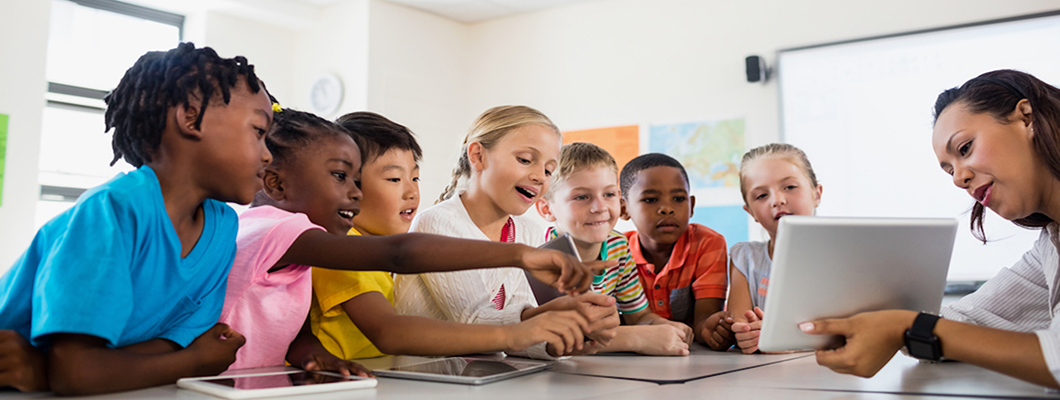
People often assume that children learn new languages easily and effortlessly, regardless of their situation. But is it true that children know language like sponges?
Research has shown that children are very successful long-term learners when exposed to a new language. Like immigrant children who are surrounded by a new language every day. In such a scenario, children master the new language much more than adults in the long run. But if the amount of language children is exposed to is limited, such as in classroom language learning, children are slow learners and generally no more successful than teenagers or adults.
Exposing children to language learning at an early age has many long-term benefits. Studies show that "bilingual children outperform monolingual children in problem-solving and creative thinking skills." Realizing the many opportunities for those who speak multiple languages should motivate you to foster this learning at home.
Vocabulary is one of the aspects of language that should be emphasized in teaching and learning foreign languages, so vocabulary is a key component in teaching a second language. Lack of mastery of vocabulary leads to weakness in other language skills such as listening, speaking, reading and writing, so vocabulary should be followed in language activities to improve students' language skills.
Use of educational aids
Using educational aids can increase students' mastery in learning vocabulary. Educational aids are an integral part of every classroom. In the classroom, to create a dynamic learning environment, the teacher must use many teaching aids. A teaching aid is a device used by a teacher to introduce a new language. It can also be used to stimulate students or relieve their anxiety, fear or boredom because many teaching aids are like games. Some of the most common teaching aids include visual aids such as blackboards, real objects, or pictures.
As students read less and less on their own, teachers are finding reading comprehension skills among today's students to be very low. Teaching aids help teachers to bridge the gap and enhance comprehension skills in their students. The use of articles, magazines, newspapers, printed advertisements, and even textbooks can be considered as teaching aids that help students understand the text.
Teaching aids are an important supplement for teachers when skill or concept reinforcement is necessary. Not only do they give students more time to practice, but they also present information in a way that will provide students with a different method. Of course, this is important to achieve different types of learning in the classroom.
As mentioned earlier, it is important for teachers to reach all learners in the classroom, and the use of teaching aids facilitates this goal. By using devices such as diagrams, flash cards and videos, visual motivation is provided to the learners and it allows them to access the content from a different point of view and gives each learner the opportunity to interact with the content. interact in a way that allows them to understand more easily.
Educational aids help make the learning environment attractive. As we move towards a digital society, most children are exposed to technology and digital devices at a younger age. Computer games and iPods are now devices that are exciting for students, so when they come to school, they don't have much patience for lecture-style instruction. Students seek constant excitement and simply cannot tolerate boredom. Educational aids improve the quality of education in today's schools, while also providing a sense of excitement that students love.
Teaching aids are becoming the norm in the classroom. Today, blackboards are replaced by whiteboards.
Students are creating podcasts,
videos, and even internet searches, all of which are great teaching aids for
use in the classroom.
Advantages of educational tools
- Helping learners to improve reading
comprehension skills
- Relieve anxiety
- Distinguishing education
- Demonstrate or reinforce a skill or
concept
- Engaging students' other senses
- No restrictions on the use of educational aids
Some teaching aids
Teacher and blackboard
Teacher and blackboard are the best
teaching tools available, convenient and popular.
video projector
Most lecture halls and seminar rooms
and classrooms have video projectors.
Using PowerPoint
By using PowerPoint software, you can create a number of attractive slides that can be displayed with a video projector and create interest for Kokan language learners.
PowerPoint has pre-made templates to help you prepare professional and visually appealing slides. Photographic images can be included as slides in your presentation.
Using video in teaching and learning
Video footage can be made available to
students through a website for their private study time.
Teaching and learning with technology
The need to use technology in language learning at a young age is increasing rapidly. Children lose their concentration easily during the long process of language learning. Technology can be one way Be the ones that make children focus more.
Technology creates a real and
enjoyable environment for children. The use of technology has become an
important part of the learning process inside and outside the classroom. Every
language classroom usually uses some kind of technology. Technology enables
teachers to adapt their classroom activities thus enhancing the language
learning process. Recommend you to study Technology-based Education article.
Use flash cards
One of the easiest and most exciting
games that can be played with children is playing with flash cards, which can
be used to teach children a second language. It has been Happy Ent's smart
flash cards.

Leave a Comment